Alfa Romeo Junior vs Hyundai Staria – Differences & prices compared
Compare performance, boot capacity, efficiency and price at a glance.
Find out which car is the better choice for you – Alfa Romeo Junior or Hyundai Staria?
Costs and Efficiency:
Price and efficiency are key factors when choosing a car – and this is often where the real differences emerge.
Alfa Romeo Junior has a convincingly advantage in terms of price – it starts at 25700 £, while the Hyundai Staria costs 42400 £. That’s a price difference of around 16757 £.
Fuel consumption also shows a difference: Alfa Romeo Junior manages with 4.80 L and is therefore significantly more efficient than the Hyundai Staria with 7.60 L. The difference is about 2.80 L per 100 km.
Engine and Performance:
Power, torque and acceleration are the classic benchmarks for car enthusiasts – and here, some clear differences start to show.
When it comes to engine power, the Alfa Romeo Junior has a a bit edge – offering 280 HP compared to 225 HP. That’s roughly 55 HP more horsepower.
In acceleration from 0 to 100 km/h, the Alfa Romeo Junior is significantly quicker – completing the sprint in 5.90 s, while the Hyundai Staria takes 10.20 s. That’s about 4.30 s faster.
In terms of top speed, the Alfa Romeo Junior performs slightly better – reaching 206 km/h, while the Hyundai Staria tops out at 167 km/h. The difference is around 39 km/h.
There’s also a difference in torque: Hyundai Staria pulls barely noticeable stronger with 367 Nm compared to 345 Nm. That’s about 22 Nm difference.
Space and Everyday Use:
Cabin size, boot volume and payload all play a role in everyday practicality. Here, comfort and flexibility make the difference.
Seats: Hyundai Staria offers decisively more seating capacity – 9 vs 5.
In curb weight, Alfa Romeo Junior is convincingly lighter – 1380 kg compared to 2275 kg. The difference is around 895 kg.
In terms of boot space, the Hyundai Staria offers decisively more room – 831 L compared to 415 L. That’s a difference of about 416 L.
In maximum load capacity, the Hyundai Staria performs minimal better – up to 1303 L, which is about 23 L more than the Alfa Romeo Junior.
When it comes to payload, Hyundai Staria convincingly takes the win – 775 kg compared to 420 kg. That’s a difference of about 355 kg.
Who comes out on top?
Overall, the Alfa Romeo Junior shows itself to be is largely superior and secures the title of DriveDuel Champion.
It convinces with the more balanced overall package and proves to be the more versatile choice for everyday use.
 @ Alfa Romeo / Stellantis Media
@ Alfa Romeo / Stellantis Media
Alfa Romeo Junior
Alfa Romeo Junior
The Alfa Romeo Junior captures the essence of Italian design with its sleek lines and compact dimensions, making it an icon of elegance and performance. With a spirited driving experience and a charming retro aesthetic, it appeals to enthusiasts and casual drivers alike. This delightful car embodies the brand's rich heritage while remaining a fun and engaging option for those seeking a unique automotive experience.
details @ Alfa Romeo / Stellantis Media
@ Alfa Romeo / Stellantis Media
 @ Alfa Romeo / Stellantis Media
@ Alfa Romeo / Stellantis Media
 @ Alfa Romeo / Stellantis Media
@ Alfa Romeo / Stellantis Media
Hyundai Staria
The Hyundai Staria stands out with its futuristic design, characterised by sleek lines and an expansive front grille that makes a bold statement on the road. Inside, it offers a spacious and versatile interior, providing a comfortable ride for both driver and passengers. This vehicle effortlessly combines practicality with a touch of luxury, appealing to families and professionals alike.
details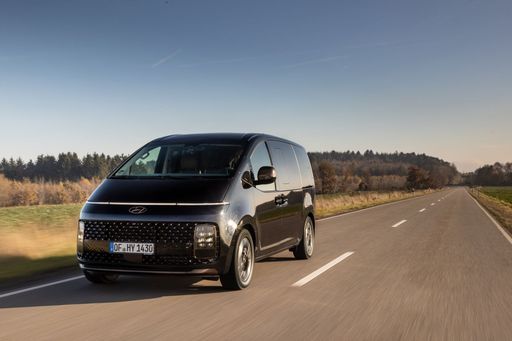 @ Hyundai Motor Company
@ Hyundai Motor Company
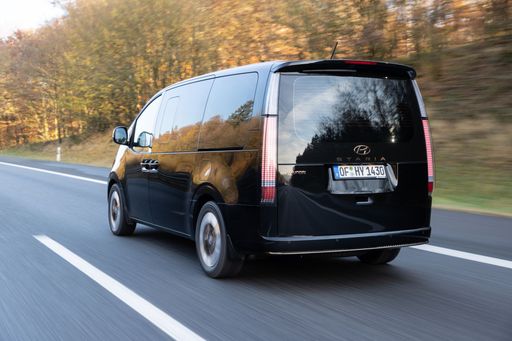 @ Hyundai Motor Company
@ Hyundai Motor Company
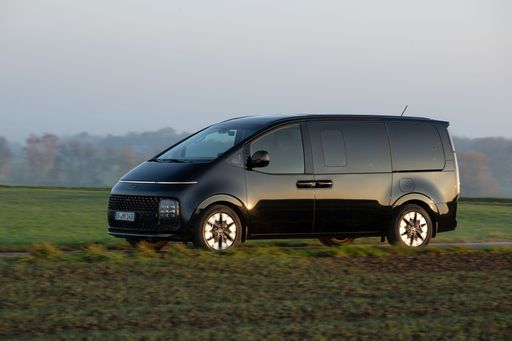 @ Hyundai Motor Company
@ Hyundai Motor Company
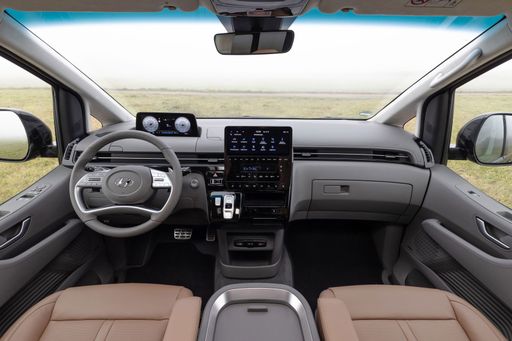 @ Hyundai Motor Company
@ Hyundai Motor Company
 @ Hyundai Motor Company
@ Hyundai Motor Company
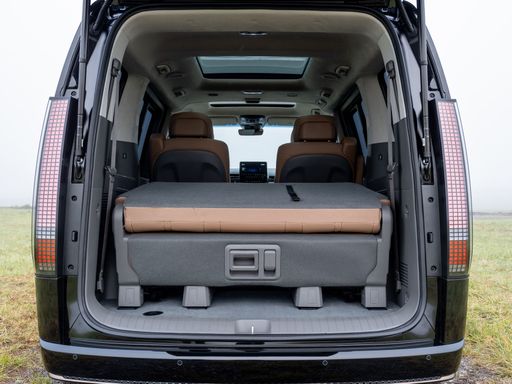 @ Hyundai Motor Company
@ Hyundai Motor Company
 @ Alfa Romeo / Stellantis Media
@ Alfa Romeo / Stellantis Media
|
 @ Hyundai Motor Company
@ Hyundai Motor Company
|
|
|
|
Costs and Consumption |
|
|---|---|
|
Price
25700 - 41600 £
|
Price
42400 - 50500 £
|
|
Consumption L/100km
4.8 - 5.4 L
|
Consumption L/100km
7.60 L
|
|
Consumption kWh/100km
15.1 - 17.5 kWh
|
Consumption kWh/100km
-
|
|
Electric Range
344 - 410 km
|
Electric Range
-
|
|
Battery Capacity
0.4 - 51 kWh
|
Battery Capacity
-
|
|
co2
0 - 119 g/km
|
co2
172 g/km
|
|
Fuel tank capacity
44 - 45 L
|
Fuel tank capacity
65 L
|
Dimensions and Body |
|
|---|---|
|
Body Type
SUV
|
Body Type
Bus
|
|
Seats
5
|
Seats
7 - 9
|
|
Doors
5
|
Doors
5
|
|
Curb weight
1380 - 1689 kg
|
Curb weight
2275 - 2345 kg
|
|
Trunk capacity
340 - 415 L
|
Trunk capacity
117 - 831 L
|
|
Length
4173 mm
|
Length
5253 mm
|
|
Width
1781 mm
|
Width
1997 mm
|
|
Height
1505 - 1538 mm
|
Height
1990 mm
|
|
Max trunk capacity
1205 - 1280 L
|
Max trunk capacity
431 - 1303 L
|
|
Payload
390 - 420 kg
|
Payload
605 - 775 kg
|
Engine and Performance |
|
|---|---|
|
Engine Type
Electric, Petrol MHEV
|
Engine Type
Full Hybrid
|
|
Transmission
Automatic
|
Transmission
Automatic
|
|
Transmission Detail
Dual-Clutch Automatic, Reduction Gearbox
|
Transmission Detail
Automatic Gearbox
|
|
Drive Type
Front-Wheel Drive, All-Wheel Drive
|
Drive Type
Front-Wheel Drive
|
|
Power HP
136 - 280 HP
|
Power HP
225 HP
|
|
Acceleration 0-100km/h
5.9 - 9.1 s
|
Acceleration 0-100km/h
10.20 s
|
|
Max Speed
150 - 206 km/h
|
Max Speed
167 km/h
|
|
Torque
230 - 345 Nm
|
Torque
367 Nm
|
|
Number of Cylinders
3
|
Number of Cylinders
4
|
|
Power kW
100 - 207 kW
|
Power kW
165 kW
|
|
Engine capacity
1199 cm3
|
Engine capacity
1598 cm3
|
General |
|
|---|---|
|
Model Year
2024 - 2025
|
Model Year
2024
|
|
CO2 Efficiency Class
A, C, D
|
CO2 Efficiency Class
F
|
|
Brand
Alfa Romeo
|
Brand
Hyundai
|
What drive types are available for the Alfa Romeo Junior?
Available configurations include Front-Wheel Drive or All-Wheel Drive.
The prices and data displayed are estimates based on German list prices and may vary by country. This information is not legally binding.
